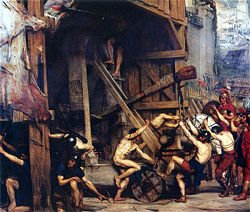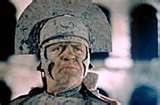

 The siege against Jerusalem
began at the Passover, 70 A.D. According to Josephus there were well
over a million Jewish people gathered there to observe the Passover for
he says the entire number that perished in the siege was 1,100,000.
The siege against Jerusalem
began at the Passover, 70 A.D. According to Josephus there were well
over a million Jewish people gathered there to observe the Passover for
he says the entire number that perished in the siege was 1,100,000.  The Roman General Vespasian
left the war [from Caesarea that was to be waged] in Jerusalem to go to
Rome, during the latter part of 69 A.D., at which time he became the
confirmed new Emperor, December 22, 69 A.D (The Bible as History by
Werner Keller, pages 398-399; The Decline and Fall of the Roman Empire,
volume 1, page 461 by Gibbon).
The Roman General Vespasian
left the war [from Caesarea that was to be waged] in Jerusalem to go to
Rome, during the latter part of 69 A.D., at which time he became the
confirmed new Emperor, December 22, 69 A.D (The Bible as History by
Werner Keller, pages 398-399; The Decline and Fall of the Roman Empire,
volume 1, page 461 by Gibbon).
http://bodyofchristonline.us/ http://cog-ff.com http://www.ezekielwatchman.org/
